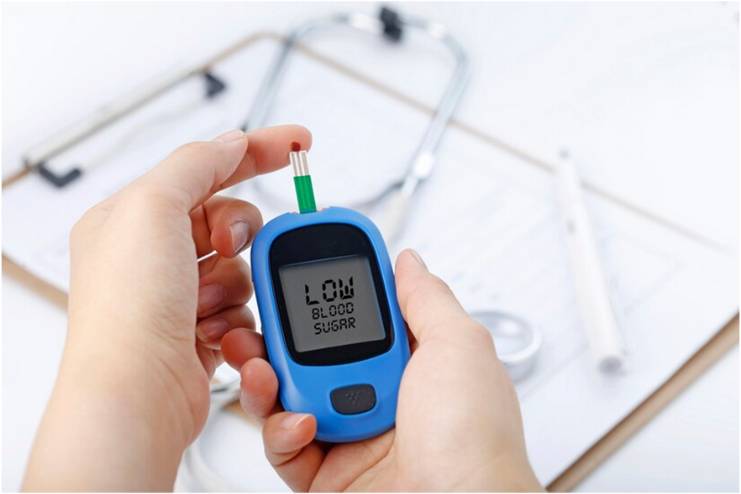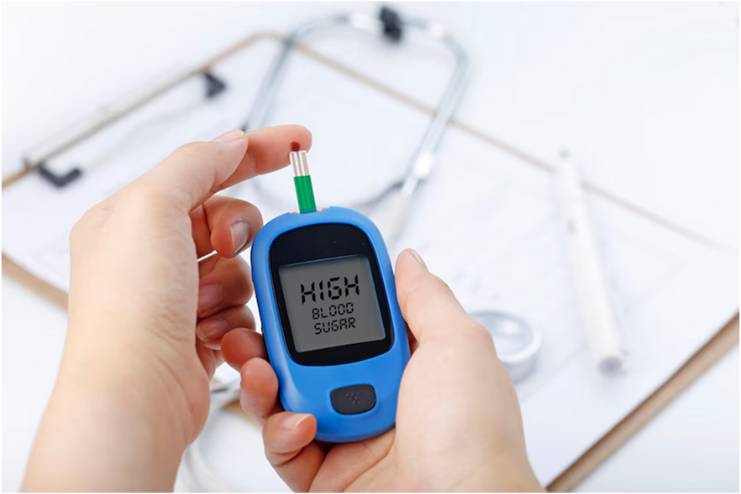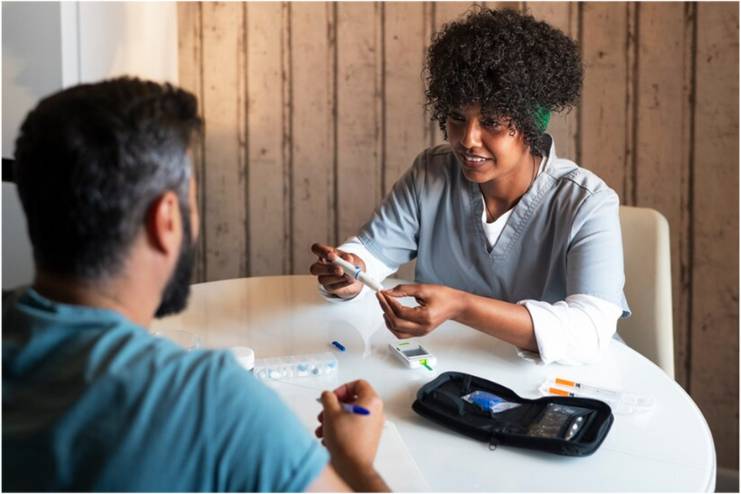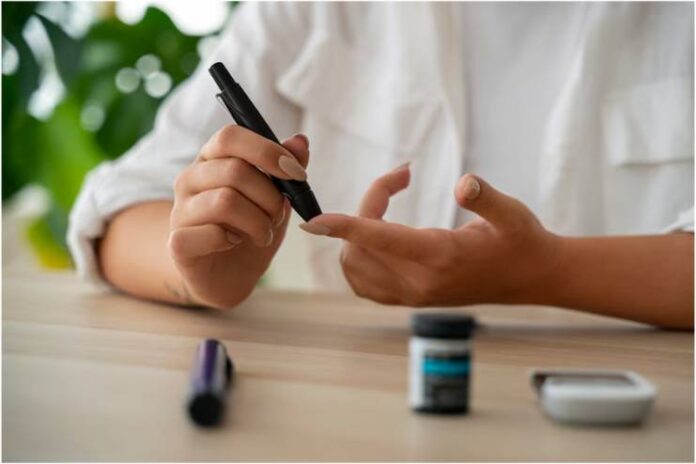Affiliate Disclaimer
Some links in this article are affiliate links. We may earn a small commission if you make a purchase through these links, at no extra cost to you. We only recommend products we find useful to our readersManaging a blood sugar level is a part of living with type-1 diabetes. When your body no longer produces insulin, the hormone that regulates blood sugar, it becomes difficult to balance blood sugar levels as low and high blood sugar bring significant health risks.
Understand how to manage both extremes to avoid immediate health crises and to ensure a better quality of life with type-1 diabetes. This helps in recognizing, preventing, and responding to both low and high blood sugar levels, thus keeping you proactive and prepared.
Understanding Hypoglycemia

Hypoglycemia is the term used to describe low blood sugar, at or below 70 milligrams per deciliter (mg/dL), or 3.9 millimoles per liter (mmol/L). Glucose is important because it is the fuel for all bodily functions, especially the brain.
Hypoglycemia is mostly linked with diabetes treatment because sometimes medications like insulin or oral hypoglycemics can cause blood sugar to fall too low. Other causes of hypoglycemia include some medicines, alcoholism, and other medical conditions.
Causes of Hypoglycemia
The typical cause of hypoglycemia in diabetics is an imbalance between glucose intake and medication dosage.
In this case, hypoglycemia can develop when one takes too much insulin, skips a meal following the intake of the drug, or exercises more than usual without changing food or insulin intake.
Symptoms of Hypoglycemia
The symptoms of hypoglycemia vary and may start showing symptoms such as:
- Shakiness
- Sweating
- Hunger
- Headache
- Tachycardia.
Sometimes, if not treated, the condition progresses to:
- Confusion
- Blurred vision
- Seizures
- Loss of consciousness
If detected and treated early, the condition will not progress to severe problems.
Managing Hypoglycemia
Hypoglycemia requires immediate action to restore blood sugar levels and avoid serious complications. Here’s how to manage hypoglycemia effectively:
The 15-15 Rule
For mild hypoglycemia (blood sugar below 70 mg/dL), use the 15-15 rule:
- Consume 15 grams of fast-acting carbs (e.g., 4 ounces of juice, glucose tablets, or a tablespoon of honey)
- Wait for 15 minutes and recheck your blood sugar
- If blood sugar remains below 70 mg/dL, repeat the process until the levels stabilize
- Follow up with a snack or meal that combines carbs and protein to maintain stable blood sugar
Treating Severely Low Blood Sugar
Severe hypoglycemia (blood sugar below 55 mg/dL) may impair your ability to self-treat. Here’s how to handle it:
- Glucagon Injection: For severe cases, an injectable glucagon kit is essential
- After Treatment: Seek medical help promptly after administering glucagon. Consume a fast-acting sugar source, followed by a protein-carb snack
Immediate Treatment and Long-Term Management
Immediate treatment focuses on rapidly increasing blood glucose, usually with the ingestion of a fast-acting carbohydrate, such as:
- Juice
- Glucose tablets
- Candy
For patients with diabetes, repeated episodes should be treated with increased frequency of monitoring, the use of a CGM, and the provision of snacks or glucose tablets for emergencies. Underlying causes should always be addressed in recurrent cases.
Preventive Tips
- Monitor Blood Sugar: Regular blood sugar checks can help you detect patterns and avoid sudden glucose level drops
- Inform Others: Friends, family, and coworkers should know how to recognize and respond to hypoglycemia, including administering glucagon if needed
- Consult Your Doctor: If hypoglycemia episodes persist, consult your doctor before making any changes to medication or diet
Managing hypoglycemia effectively and educating those around you can reduce the risks associated with low blood sugar and help you maintain safer glucose levels.
Alcohol Intake
Alcohol consumption increases the risk of hypoglycemia, especially if taken on an empty stomach. However, the glucose level at bedtime has to be monitored and the numbers have to be maintained in a safe range.
Understanding Hyperglycemia

High blood sugar, also called hyperglycemia, is a common condition among diabetic patients, typically when a patient’s blood sugar level exceeds 180-200 mg/dL. Its proper control has to be ensured to rule out any major problems.
Causes of Hyperglycemia
There are a variety of reasons which contribute to hyperglycemia in diabetes patients:
- Not following the prescribed meal plan for diabetic patients
- Failure to take enough medication
- Using expired insulin
- Incorrect technique while injecting
- Lethargy
- The body can raise blood sugar levels in response to disease, trauma, and stress
Symptoms of Hyperglycemia
Hyperglycemia symptoms may take days or weeks to develop. Initial symptoms include:
- Swollen eyes
- Increased urination
- Thirst
- Weakness or fatigue
If left untreated, you may observe worse signs, which include:
- Sweet fruit-like smell in breath
- Nausea and vomiting
- Shallow breathing and confusion
Seek emergency medical help if the blood sugar remains high, especially in the presence of ketones above 240 mg/dL.
Complications of Hyperglycemia
Chronic hyperglycemia results in:
- Cardiovascular Disorders: It damages the blood vessels, hence causing cardiovascular disease
- Neuropathy: Persisting diabetes for a longer duration damages nerves
- Kidney Disorder: High blood sugar affects the kidney continuously
- Eye and Foot Disorders: It might cause blindness and severe infections of the feet
In emergencies, hyperglycemia can cause:
- Diabetic Ketoacidosis: Toxic ketones build-up
- Hyperosmolar Hyperglycemic State: It is a highly elevated level of blood sugar that does not include ketones, usually with severe dehydration
Managing Hyperglycemia
Proper management of hyperglycemia requires awareness of factors that impact blood sugars. Here are key considerations:
Dietary and Nutritional
- Carb Management: Counting carbs and making choices at high-fiber, high-nutrient fruits and vegetables, and whole grains helps prevent fluctuations in glucose levels
- Portion Control: Implement the plate method. Ensure you fill half of the plate with non-starchy vegetables, a quarter part of it with lean proteins, and the quarter is comprised of healthy carbohydrates
- Sugar-Sweetened Drinks: Avoid them mostly. Use them only in hypoglycemia
Exercise
- Exercise Benefits: Regular exercise increases insulin sensitivity and helps regulate blood glucose levels. At least 150 minutes of moderate aerobic exercise per week, such as brisk walking or cycling, should be combined with strength training.
- Monitoring Blood Glucose During Exercise: Monitor blood glucose before and after exercise if you’re on insulin. If hypoglycemia is likely to occur, carry snacks during long or strenuous activities.
Prevention Tips
Preventing hyperglycemia includes :
- Consistent Planning of Meals: Plan meals compatible with diabetes.
- Monitoring: Blood sugar checks must be done frequently to keep the glucose within normal range.
- Management of Medication: Take all prescribed diabetes medicines and modify them as per daily activities. Proper management of hyperglycemia prevents serious health risks and improves general well-being.
Medication Management
Insulin needs to be stored appropriately for its effect, and sometimes the doses need to be adjusted based on blood glucose levels and mealtime. Always share changes with a provider.
Management of Illness
- Planning for Sick Days: Illness will raise your blood sugar due to stress hormones released. Planning should include hydration, medication, and the right foods
- Continuous Monitoring: Monitor the glucose level frequently and hydrate with calorie-free fluids
Shift in Hormonal Levels
Keep track of your menstrual cycle and how it affects your menopause. Hormonal fluctuations can cause blood glucose levels to spike in unpredictable ways. By tracking patterns, you may be able to make some adjustments to your management plan.
Stress Management
- Stress for many days causes elevated blood glucose. Mindfulness and relaxation techniques and sufficient sleep can reduce the glucose fluctuation caused by stress.
- Regular management of these factors and communicating with your healthcare provider will ensure better management of hyperglycemia, thus minimizing associated risks.
Creating a Personalized Diabetes Action Plan

Good diabetes control also includes monitoring blood glucose and being prepared for emergencies. While there are many ways to control diabetes, the majority of the patients rely on fingerstick checks that provide a single glucose reading.
However, CGMs give real-time, continuous information, and healthcare providers often recommend using a CGM for improved glucose control.
Diabetic Emergency Kit Essential Items
Create a diabetic emergency kit according to your needs. Fill it with the following items:
- Medical Information: Carry personal ID, medical conditions, medication list, prescriptions, insulin pump details, and emergency contacts in a waterproof bag.
- Diabetes Supplies: Pack enough supplies to last 1-2 weeks, including:
- Insulin and syringes
- Glucose meter and extra batteries
- Lancets, pump supplies, glucagon kit, alcohol wipes, glucose tablets, and emergency carbs
- Storage Tips: Keep supplies at room temperature away from direct sunlight, extreme cold, or extreme heat. Label things with dates and use them by those.
Educate yourself about diabetic emergencies, such as DKA, HHS, and insulin shock. Some symptoms include dizziness, confusion, extreme thirst, and weakness. Teach your family how to use your kit and emergency protocols and consult your healthcare provider to know risk factors based on your health profile.
Conclusion
With a tailored diabetes action plan, you will have control to master your health. Frequent monitoring of glucose with a CGM and preparation of a diabetic emergency kit ensure your routine and urgent needs can be addressed comfortably.
Update your kit from time to time and keep information on emergencies related to diabetes.
References
- https://www.mayoclinic.org/diseases-conditions/hypoglycemia/symptoms-causes/syc-20373685
- https://www.cdc.gov/diabetes/treatment/treatment-low-blood-sugar-hypoglycemia.html
- https://www.mayoclinic.org/diseases-conditions/hyperglycemia/symptoms-causes/syc-20373631
- https://www.mayoclinic.org/diseases-conditions/diabetes/in-depth/diabetes-management/art-20047963
- https://my.clevelandclinic.org/health/articles/continuous-glucose-monitoring-cgm
- https://www.healthline.com/health/diabetic-emergency-kit
In this Article


















